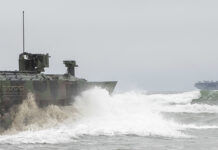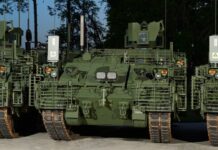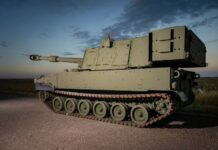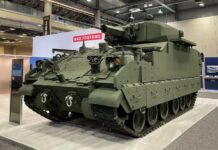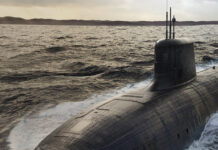BAE Systems Inc in the United States has secured a USD 219 M (EUR 206.55 M) contract to supply five Mk 45 Maritime Indirect Fire Systems (MIFS) for UK Royal Navy (RN) Type 26 frigates, the company announced on 28 February 2023.
The system combines BAE’s 127 mm/L62 (5-inch) Mk 45 Mod 4A gun with the company’s fully automated Ammunition Handling System (AHS).
A BAE Systems spokesperson confirmed to ESD on 28 February that these MIFSs will equip the second batch of RN Type 26 frigates – Birmingham, Sheffield, Newcastle, Edinburgh and London – that were ordered by the UK Ministry of Defence in November 2022, with the first three RN Type 26s currently in build already slated to receive the system under a USD 245 M contract issued to BAE Systems in July 2016.
“We have innovated and customised the Mk 45 system to provide a critical and reliable fully automatic ammunition handling solution that revolutionises medium and large calibre naval gunnery,” Brent Butcher, vice president of the weapon systems product line at BAE Systems Inc, was quoted as saying in a BAE press release. “The customised, lightweight and compact Mk 45 gun system with AHS provides our customers commonality with the US Navy,” he said, adding that MIFS is “a highly reliable system with security of lifecycle support and access to future technology upgrades”.
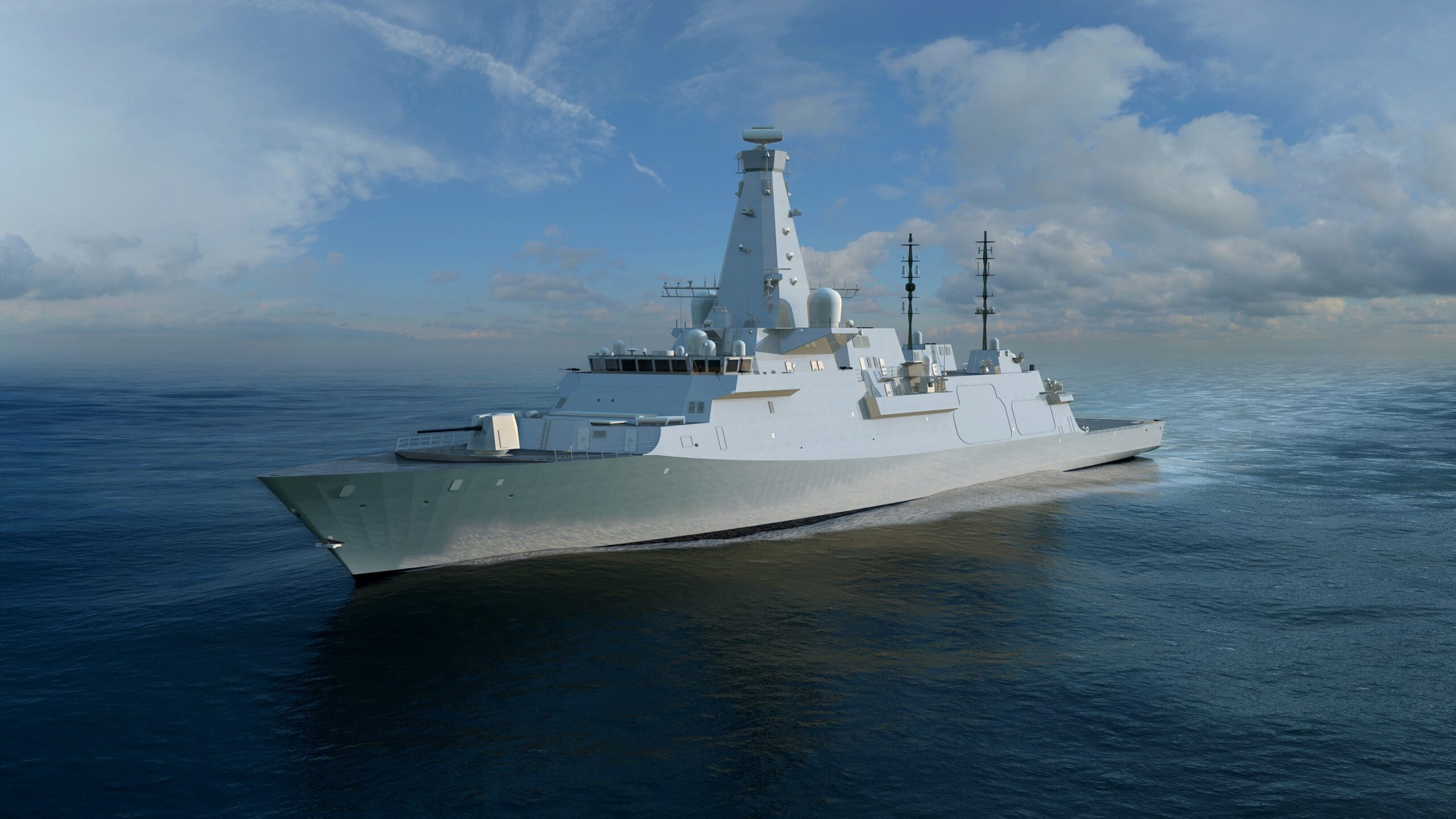
The 127 mm/L62 (5-inch) Mk 45 Mod 4A gun is itself a step up in calibre for the Royal Navy, as its current Type 23 frigates – and even its six Type 45 destroyers – are armed with a 114 mm/L55 Vickers Mk 8 Mod 1 gun, whereas 127 mm has been the standard calibre for US Navy guns for several decades.
While the Mk 8 Mod 1 can fire a standard 21 kg shell up to about 22 km (and extended-range rounds to 27.5 km), the 127 mm/L62 Mk 45 Mod 4 can fire a standard 31 kg shell out to a range of more than 36 km and extended-range munitions much further (the now-cancelled Mk 171 Extended-Range Guided Munition could reach at least 110 km).
The Mk 8 Mod 1 is lighter than the Mk 45 Mod 4 (23 tonnes as opposed to 24.4 tonnes), making it slightly more agile, and it can achieve a rate of fire of up to 26 rpm compared to 16-20 rpm for the Mk 45 Mod 4, but the latter has better elevation characteristics (-15 to +65 deg compared to -10 to +55 deg), making it more versatile when used as an anti-air weapon.
The first RN Type 26 frigate, Glasgow, was launched in 2022, is currently fitting out and is expected to be commissioned in late 2026. The second and third Type 26s, Cardiff and Belfast, are currently under construction and expected to be commissioned in 2028 and 2029 respectively.
Engineering and programme support for the new MIFS contract will be performed at BAE Systems’ production facilities in Minneapolis, Minnesota, and Louisville, Kentucky.
BAE Systems shipped the main equipment for the first MIFS at the end of 2022, with installation to follow in 2023.
Peter Felstead





